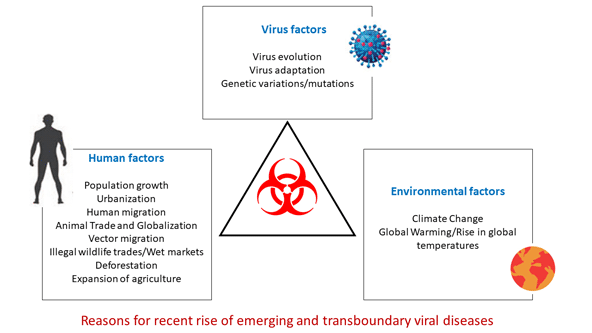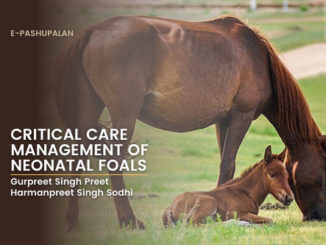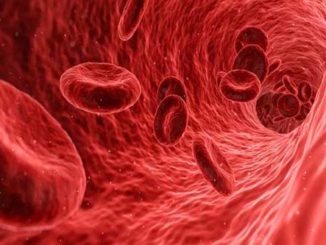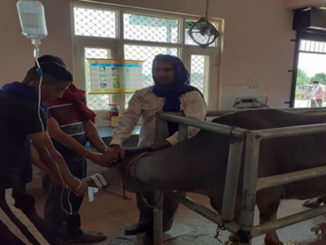1. Agriculture and Livestock farming, a way of living in Indian setting
Agriculture in India is considered as the mainstay for a majority of people. Among the sub- sectors of agriculture, animal husbandry and livestock play a significant role in economic development of our country and upliftment of employment opportunities. With the technological advancement, agri-business strategies and financial provisions from the Government of India, livestock farming and production is growing in a consistent pace with an increasing popularity of milk, meat and milk/meat products and as a source of income to small holder farmers. According to the 20th livestock census report, India has a total livestock population of 536.76 million (M), cattle being on the top of the list (193.46 M), followed by goat (148.88 M), buffalo (109.85 M), sheep (74.26 M), pig (9.06 M) and other livestock (Mithun, Horse, Yak, Donkey and Camel) (20th Livestock census report, 2019). With such a diverse and high value agricultural productivity, the livestock population should be secured in terms of effective animal health management, livestock diseases and nutritional security for humans.
2. Recent rise of emerging and transboundary viral diseases of livestock
The recent trends of emerging viral infections reported from different regions of India have been associated with serious consequences on animal health and rural economy. An emerging infectious disease can be defined as a new disease occurring in a region or host population whose incidence and geographic range is rapidly increasing lacking diagnostic facility and expertise to the control the disease. On the other hand, transboundary diseases are highly contagious and transmissible epidemic diseases of livestock which have the capability of rapid spread to new areas or regions regardless of national borders causing serious socio-economic and public health consequences. In the last two decades (2000-2020), a number of emerging and transboundary animal viral diseases have been detected in livestock from different regions of India (Table 1). Among them, the vast majority of diseases were reported to be infections of pigs, which is possibly the reason behind the decline of Indian pig population from 11.13 M in 2007, 10.29 M in 2012 to 9.06 M in the latest livestock census of 2019.

Table 1: List of emerging and transboundary viral infections of livestock reported from India in the last two decades
|
Disease |
Agent | Affected species in the first report | Reported region/regions following outbreaks or as a part molecular surveillance |
Disease Status |
| African Swine Fever (2020) |
African Swine Fever virus | Domestic pigs | Arunachal Pradesh and Assam | Transboundary OIE listed |
| Porcine dermatitis nephropathy syndrome/ Acute myocarditis and Multisystemic inflammation (2020) |
Porcine Circovirus type 3 | Domestic pigs | Chhattisgarh, Maharashtra, Assam and Mizoram | Emerging |
| Lumpy Skin Disease (2019) |
Lumpy Skin Disease virus | Cattle | Odisha | Transboundary OIE listed |
| Torque teno virus infection (2019) |
Torque teno sus virus | Domestic pigs | Assam, Chhattisgarh, Goa, Karnataka, Madhya Pradesh, Maharashtra, Meghalaya, Mizoram, Odisha, Sikkim, Telangana | Emerging |
| Porcine Astrovirus infections (2018) |
Porcine Astrovirus lineage 2 and 4 | Domestic pigs | Kerala, Tamil Nadu, Karnataka, Uttar Pradesh, Assam, Nagaland, Manipur, Mizoram and Tripura | Emerging |
| Porcine Rotaviral diarrhea (2017) |
Porcine Rotavirus C | Domestic pigs | North-eastern, Northern and Southern regions of India | Emerging |
| Porcine reproductive and respiratory syndrome (2013) |
Porcine reproductive and respiratory syndrome virus | Domestic pigs | Mizoram | Transboundary OIE listed |
| Swine Influenza/Swine Flu (2010) |
Influenza A H1N1 | Domestic pigs | Uttar Pradesh | Emerging |
| Stillbirth mummification embryonic death infertility syndrome (2010) |
Porcine Parvovirus | Domestic pigs | Uttar Pradesh | Emerging |
| Post weaning multisystemic wasting syndrome (2008) |
Porcine Circovirus type-2 | Domestic pigs | North India (region not defined) | Emerging |
3. Possible reason of increase in emerging viral infections
The emergence of new and transboundary viral diseases is of particular concerns because they jeopardize livestock security, increases poverty levels in rural families, causes major production losses of livestock products nationally and globally as well as threatens the wild-life population that can be infected through potential environmental contamination. Therefore, it is necessary to find out or study the factors that underlie the emergence of new infections. According to scientific research, the dynamics of newly emerging viruses causing severe consequences in livestock can be related to three major factors (i) viral (ii) human and (iii) environmental factors. The virus factors include virus evolution and rapid environmental adaptability so that they can survive and reach adaptive equilibrium within a new host thus expanding their host range. Genetic variations such as mutations in viral genomes play a major role in rapid evolution of viruses. More than the virus factors, the human factors are actually the most potent driving forces of disease emergence. Increased population of humans, unplanned urbanization, human migration into fringe areas, deforestation and change in agricultural practices, animal trade, increased domestic and global connectivity have a greater impact on emergence of new animal diseases. Most of emerging animal diseases have occurred after extreme climatic conditions such as floods and droughts and as result of global warming, demonstrating a clear relationship between environmental characteristics and virus emergence.
4. Effective response strategy and control
The risk of emerging animal viral diseases in India is likely to further grow in future as increased human population in developing countries will generate increased demand for animal protein and products. Therefore, to control the outbreak losses of emerging and transboundary animal diseases for which vaccines are not available yet, a nation must strengthen its veterinary services which includes (i) effective and rapid diagnostic facilities for emerging and transboundary/exotic diseases, (ii) effective disease management approach and biosecurity and (iii) awareness among the farmers and livestock owners about the high-threat emerging animal diseases. Besides, for effective containment of such high threat viral diseases, several other factors such as the nature of the virus, speed of its spread, role of biological and mechanical vectors, risk assessment, communication and management, response time and a nation’s legislation on disease control and prevention is critical and need to be investigated as well. Considering the devastating effects of emerging and transboundary animal diseases on food security, food safety and public health (in case of zoonotic infections) in the recent time, the World Organization for Animal Health (OIE) in its sixth strategic plan (2016-2020), implemented a strategy for bio-threat reduction by addressing five key areas : (i) Maintaining scientific expertise and setting standards and guidelines, (ii) Good governance, Capacity-building and implementation of the one health concept, (iii) Global disease intelligence and updates on the latest methods for disease prevention and control, (iv) International cooperation and solidarity between countries and (v) Advocacy and communication. This new approach of animal disease tracking, risk assessment and management will surely help in ensuring global biological security.
5. Our role as Veterinarians and Animal Scientists?
Recent emergence of notable emerging and transboundary animal infections has put greater responsibilities on veterinarians and animal scientists in order to ensure effective monitoring and control the spread of infectious diseases. Therefore, as veterinarians, it is our fundamental duty to promptly detect unusual clinical features or atypical cases in a group of livestock population. Early disease reporting and a strong field surveillance plays a key role in control of emerging and transboundary infections. In situations of emerging animal disease outbreaks, veterinarians should effectively communicate with local farmers and livestock owners to make them understand the clinical symptoms of high threat diseases, the pattern of their transmission and spread. We, as veterinarians, should make sure that biosecurity measure in farm level and in disposal of animal carcasses died of emerging or transboundary diseases should be effectively implemented with standard protocols. The Department of Animal Husbandry and Veterinary of affected regions should play critical role in management and preparedness in effective containment of emerging diseases so that it should not spread to nearby locations. Another growing concern of such emerging infections in livestock is that, it is a direct threat to the free-ranging wildlife populations of our country. Wild-life veterinarians should be skilled enough to promptly detect and investigate emerging diseases in order to plan strategic prevention of high threat diseases and management of wildlife health. Veterinary researchers and scientists should play a crucial role in early identification of emerging infectious agents and disseminating the information of a new emerging or transboundary disease to the field so that veterinarians in the field can effectively execute the control measures. Moreover, assessment and evaluation of risks associated with any emerging disease in livestock is another perspective which needs immediate attention. Participation of veterinary researchers with a sound scientific and technical knowledge of livestock diseases, national and international legislation and basic knowledge on epidemiology is necessary to strengthen veterinary education in general and to control infectious emerging and transboundary diseases in particular.
References: The following references are provided to confirm the data of livestock population and the first reports of emerging diseases reported from India, which are provided in the article draft.
- 20th Livestock Census.2019.
- (2020b). African swine fever, India.
- Bera BC, Choudhary M, Anand T, Virmani N, Sundaram K, Choudhary B, Tripathi BN. Detection and genetic characterization of porcine circovirus 3 (PCV3) in pigs in India. Transboundary and Emerging Diseases. 2020 May;67(3):1062-7.
- Sudhakar SB, Mishra N, Kalaiyarasu S, Jhade SK, Hemadri D, Sood R, Bal GC, Nayak MK, Pradhan SK, Singh VP. Lumpy skin disease (LSD) outbreaks in cattle in Odisha state, India in August 2019: Epidemiological features and molecular studies. Transboundary and Emerging Diseases. 2020 Apr 18.
- Subramanyam V, Hemadri D, Kashyap SP, Hiremath J, Barman NN, Ralte EL, Patil SS, Suresh KP, Rahaman H. Detection of torque teno sus virus infection in Indian pigs. Veterinary world. 2019 Sep;12(9):1467.
- Kattoor JJ, Malik YS, Saurabh S, Sircar S, Vinodhkumar OR, Bora DP, Dhama K, Ghosh S, Banyai K, Touil N, Abdel‐Moneim AS. First report and genetic characterization of porcine astroviruses of lineage 4 and 2 in diarrhoeic pigs in India. Transboundary and emerging diseases. 2019 Jan;66(1):47-53.
- Kattoor JJ, Saurabh S, Malik YS, Sircar S, Dhama K, Ghosh S, Bányai K, Kobayashi N, Singh RK. Unexpected detection of porcine rotavirus C strains carrying human origin VP6 gene. Veterinary Quarterly. 2017 Jan 1;37(1):252-61.
- Rajkhowa TK, Gogoi A, Hauhnar L, Isaac I. Molecular detection, epidemiology and clinico-pathological studies on first outbreak of Porcine reproductive and respiratory syndrome (PRRS) in pig population of Mizoram, India. The Indian Journal of Animal Sciences. 2015 Apr 1;85(4).
- Nagarajan K, Saikumar G, Singh Arya R, Gupta A, Somvanshi R, Pattnaik B. Influenza A H1N1 virus in Indian pigs & its genetic relatedness with pandemic human influenza A 2009 H1N1. Indian Journal of Medical Research. 2010 Aug 1;132(2):160.
- Sharma R, Saikumar G. Porcine parvovirus-and porcine circovirus 2-associated reproductive failure and neonatal mortality in crossbred Indian pigs. Tropical animal health and production. 2010 Mar 1;42(3):515-22.
- Sharma R, Saikumar G. PCV 2 associated reproductive failure in Indian pigs. Indian Journal of Animal Science. 2008; 78:1239-41.






Be the first to comment